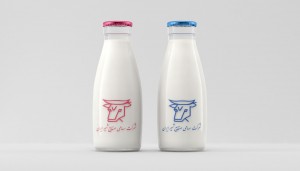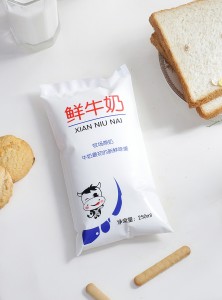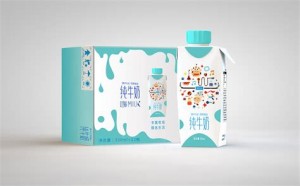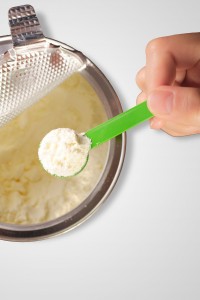The various types of dairy products on the market not only make consumers eye-catching in their categories, but also leave consumers unsure of how to choose their various forms and packaging. Why are there so many types of packaging for dairy products, and what are their differences and commonalities?
Various packaging methods for dairy products
Firstly, it is necessary to clarify that the packaging methods for dairy products usually include bagging, boxed, bottled, metal canned, etc. They each have their own characteristics and also need to meet the same packaging requirements:
The packaging of dairy products must have barrier properties, such as oxygen resistance, light resistance, moisture resistance, fragrance retention, odor prevention, etc... Ensure that external bacteria, dust, gases, light, water and other foreign objects cannot enter the packaging bag, and also ensure that the water, oil, aromatic components, etc. contained in dairy products do not penetrate outward; At the same time, packaging should have stability, and the packaging itself should not have odors, components should not decompose or migrate, and it must also be able to withstand the requirements of high temperature sterilization and low temperature storage, and maintain stability under high and low temperature conditions without affecting the properties of dairy products.
What are the differences between different packaging
1. Glass packaging
Glass packaging has good barrier properties, strong stability, recyclability, and strong environmental friendliness. At the same time, the color and status of dairy products can be intuitively seen. Usually, short shelf life milk, yogurt, and other products are packaged in glass bottles, but glass packaging is inconvenient to carry and easy to break.

2. Plastic packaging
Plastic packaging is divided into single-layer sterile plastic packaging and multi-layer sterile plastic packaging. Single layer plastic packaging usually has a black layer inside, which can isolate light, but the sealing is poor and the effect of gas isolation is also poor. This type of packaging is prone to spoilage and is often sold in refrigerators, with a relatively short shelf life;
Multi layer sterile plastic packaging is usually made by pressing multiple layers of black and white sterile composite film or aluminum plastic composite film. It is usually odorless, pollution-free, and has strong barrier properties, with a barrier to oxygen of more than 300 times that of ordinary plastic film.
This packaging can meet the requirements of maintaining the nutritional composition of milk and ensuring its hygiene and safety, with a shelf life of at least 30 days for dairy products. However, compared to glass packaging, plastic packaging has poorer environmental friendliness, higher recycling costs, and is prone to pollution.

3. Paper packaging
Paper packaging is usually composed of multi-layer composite packaging consisting of paper, aluminum, and plastic. The filling process of this type of packaging is sealed, with no air inside the packaging, effectively isolating dairy products from air, bacteria, and light. Generally, dairy products in this type of packaging have a longer shelf life and have become the most commonly used dairy product packaging due to their high cost-effectiveness.

4. Metal canning
Metal cans are mainly used for milk powder. The sealing, moisture-proof, and compressive properties of metal cans are strong, which are conducive to the preservation of milk powder and are not prone to spoilage. They are also easier to seal after opening and cover, which can prevent mosquitoes, dust, and other substances from entering the milk powder and reduce the loss of protective gases, ensuring the quality of milk powder.

Nowadays, various brands of dairy products use various packaging methods. After reading the introduction above, have you had a preliminary understanding of the characteristics of different packaging methods?
Hongze packaging uses food grade biodegradable raw materials to produce customized printed milk packaging on an environmentally friendly basis.If you have any milk Packaging requirements, you can contact us. As a flexible packaging manufacturer for over 20 years, we will provide your right packaging solutions according to your product needs and budget.
Post time: Oct-27-2023






